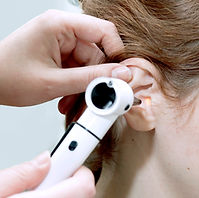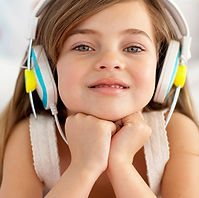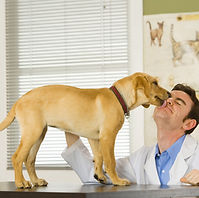
Sense of Smell: We Smell With Our Nose

This lesson contains affiliate links to products I have used and personally recommend. At no cost to you, I make a commission for purchases made through the links or advertisements. These commissions help to pay for the costs of the site and enable it to remain free for anyone who wants to use it.
Objective:
-
Students will demonstrate that the nose is responsible for receiving smells from our environment.
Question that encompasses the objective:
What happens to your sense of smell when you have a cold?
Prepare the Learner: Activating Prior Knowledge
How will students’ prior knowledge be activated?
-
Ask students share some of their favorite scents or things to smell.
-
Ask students to share some of their least favorite scents.
Materials and Free Resources to Download for this Lesson:
-
One glass of water
-
One glass of white vinegar
-
Three scent bags
-
Four zip lock bags (You will only need three for the scent bags, but an extra bag is required in Activity 1)
-
Three pieces of paper towel
-
Three items with distinctive smells (examples: orange, coffee, flower)
-
-
To prepare scent bags, place one item inside each bag, lined with paper towel to conceal the contents.
-
Plastic container with lid
-
We Smell With Our Nose Worksheet, one per student.
Input:
What is the most important content in this lesson?
To reach the lesson’s objectives, the students need to understand:
-
Smell is the primary sense involved in receiving and processing scents from our environment.
-
The nose is responsible for the intake of scent from our environment.
-
Smell serves many purposes in the real world.
How will the learning of this content be facilitated?
-
In this lesson, students will be initially engaged by attempting to determine the identity of two clear mystery liquids, using their sense of smell.
-
In the next part of the activity, students will participate in a whole class experiment using their noses to identify three different items, concealed in bags, based on scent. Students will reinforce the importance of the nose in the sense of smell by demonstrating that scents must be available to the nose, and also must be in proximity to the nose, in order to be smelled.
-
Next, students will work independently to complete a worksheet, demonstrating their understanding of the objective by identifying objects and situations, which can and cannot be identified with the nose.
-
Finally, the students will answer a written independent assessment question that requires students to apply their understanding of the objective to the real world. Describe what happens to your sense of smell when you have a cold and explain why.
Time/Application
3-5 minutes
Guided Introduction
Review the agenda with the students:
-
Guided Mini-Lesson: Mystery Liquid (10 minutes)
-
Activity Part 1: What’s In The Bag (15-20 minutes)
-
Activity Part 2: We Smell With Our Nose Worksheet (15 minutes)
-
Independent Assessment (10 minutes)
10 minutes
Guided Mini-Lesson: Mystery Liquid
-
Show students the two glasses, one filled with water, the other filled with white vinegar.
-
Ask students to guess what is in the glasses.
-
Inform students that each glass contains a different liquid, and you need to figure what is in each.
-
Discuss why you cannot use your eyes to figure out what is in each glass. Responses should indicate it is because the liquids look identical, both clear.
-
Remind students that we never taste things we cannot identify because they could be poisonous.
-
Ask for other suggestions as to how the substances in the glass could be identified.
-
Once smell has been suggested, ask students why they cannot use their sense of smell from where they are seated to identify the liquids. The responses should indicate that the liquids are too far from the students’ noses to be smelled.
-
Invite students to come up and smell each glass, without revealing what they think is in each.
-
After everyone has had a chance to smell the glasses, ask the students to reveal what the two substances are; water and vinegar.
-
Ask students what body part allowed them to figure this out. Answer: nose
15 - 20 minutes
Activity Part 1: What’s In The Bag
-
Show students the three scent bags and reveal what is inside. Pass these around and ask students describe the smell of each item.
-
Ask a student volunteer to close his/her eyes, present the volunteer with one of the three bags, open it under his/her nose and ask him or her to identify what they smell. Repeat with four to five different students. It is expected that most students will successfully identify the items based on smell.
-
With the next student volunteer hold the scent bag away from his/her nose by at least an arms-length, ask the student to identify item based on the smell. If the student cannot smell the item, ask why. (If he/she can smell the item, chose another scent bag and move further away from your volunteer). The response should indicate that the student cannot smell the item because it is too far away from his/her nose. Repeat with a couple of students to reinforce the point.
-
Ask a student to plug his/her nose. Now place one of the scent bags under his/her nose and ask the student to identify what they smell. If the student is securely plugging his/her nose they will not be able to do so. Repeat with a couple of students to reinforce the point.
-
Now place one of the scent bags inside the extra zipper bag and then inside container with lid, and ask a student to identify what is inside. He/she will not be able to do so because they will not be able to smell the item. Repeat with a couple of students to reinforce the point.
-
Ask students what body part was needed in order to identify the items by smell. Answer: the nose
15 minutes
Activity Part 2: We Smell With Our Nose Worksheet?
-
Give each student a copy of the worksheet, We Smell With Our Nose.
-
Read aloud the directions for each question and ask students to follow along.
-
Ask students to complete the worksheet independently.
-
Suggestions for extension activities for those finished early include, list everything in this classroom that we can detect with our noses, draw a landscape picture that includes at least 10 scented items.
-
10 minutes
Independent Assessment:
Describe what happens to your sense of smell when you have a cold and explain why.
Answer: Our sense of smell is lost when we have a cold because our nose gets blocked or “stuffed up.” We need our nose to be clear in order to take in scents from the world around us, and when we have a cold it is not.
Individualized Instruction/Scaffolding
English Language Learners/Students with IEPS will be supported in this lesson through written repetition of new vocabulary words, and multiple representation of vocabulary words through printed images. In addition, scaffolds such as sentence starters and note-taking graphic organizers should be implemented at the teacher’s discretion.














